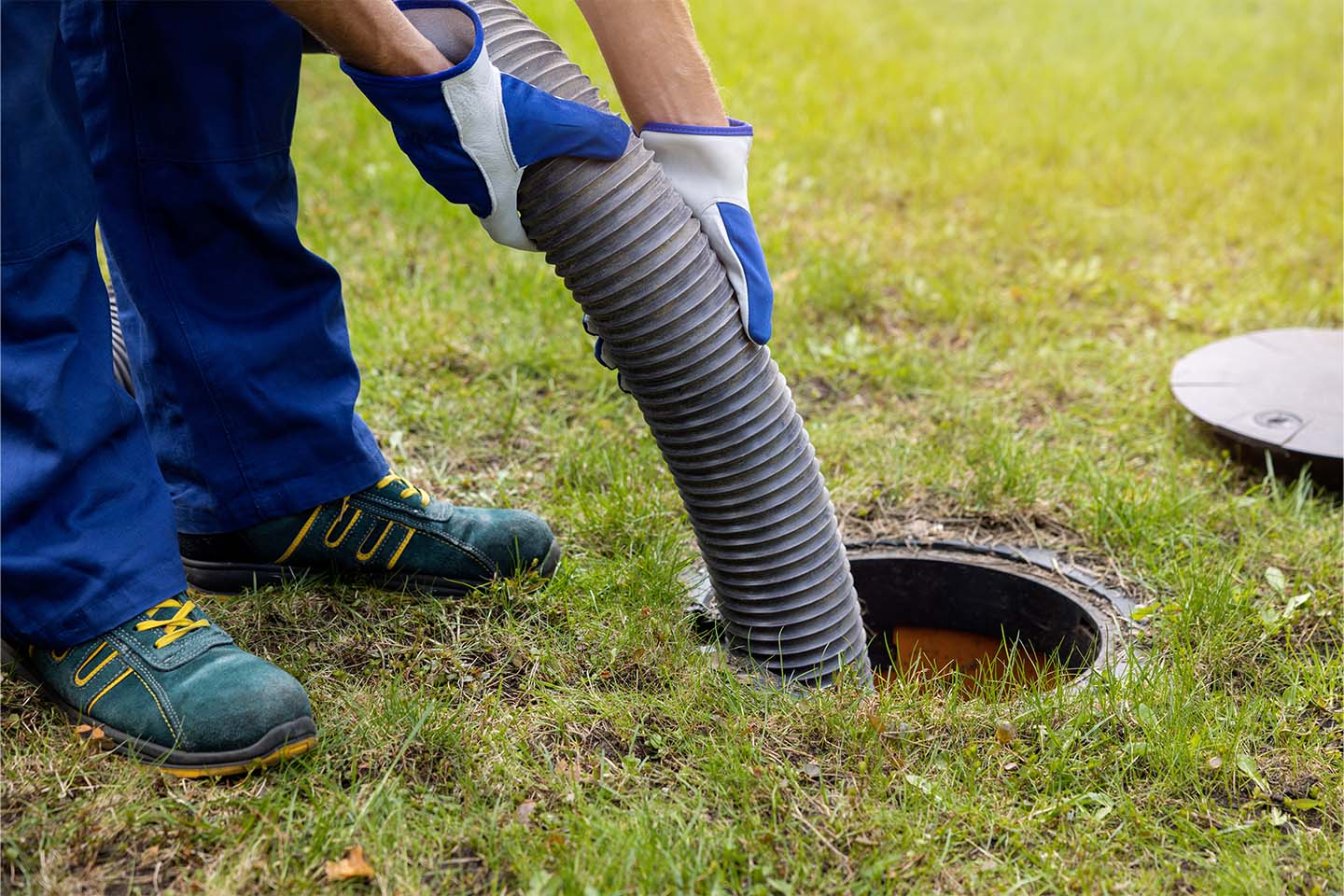A septic system is a surprisingly simple, yet effective, method of wastewater disposal which relies heavily on the presence of anaerobic (non-air-requiring) bacteria to help separate and treat the waste. Essentially, a septic tank is a large box or vault buried underground that allows all the drains in your home to connect to the tank.
When you flush a toilet, wash dishes, or use the shower, the water and everything it contains or carries, aka “septage,” flows into the septic system, where the bacteria start to eat the nutrients within. Over time, the septage separates into three components: sludge, or the solid matter in the wastewater, which settles to the bottom; scum, the oils, soaps, and other light chemicals and waste that float to the top; and effluent, or greywater, which is diverted out of the tank into a drain field. The drain field further purifies and sanitizes the effluent, which acts as fertilizer because it’s rich in nitrogen and other important elements plants need to grow well.
Depending on the size of the tank, and whether you have a simple gravity-fed system or a more advanced system with electronics and mechanical components, you should have your system checked every 1-3 years and pumped and serviced once every 3-5 years. If you don’t, or the system gets overloaded, you and your family will likely notice symptoms including:
- Toilets that flush slowly, irregularly, or not at all
- Backwashing into sinks, drains, or toilets
- Unusually green grass or overabundant plant life in your drain field
- A smell of sewage
- Odd noises
- Yard flooding
- And other issues.
If you notice any of these signs and symptoms of a septic tank malfunction or overflow, don’t wait! You should contact a plumber as soon as possible. The longer you wait to address a septic system problem, the more likely it is to be an expensive, lengthy, and difficult process. Proper septic maintenance can also help reduce the likelihood of a problem developing, or its severity if it does happen, and can help keep your family’s water and environment clean, safe, and healthy!


I completely agree with the statement that a septic system is a simple yet effective method of wastewater disposal. It’s fascinating how the system relies on the natural process of anaerobic bacteria to break down and treat the waste. This natural process not only helps in separating the waste but also plays a crucial role in preventing harmful pathogens from entering the environment. It’s impressive how such a simple system can have such a significant impact on maintaining the cleanliness and hygiene of our surroundings.
While septic systems are indeed effective in treating wastewater, they can sometimes face issues with the buildup of sludge and scum, leading to clogged pipes and system failures. One unique solution to this problem is the use of aerobic bacteria in conjunction with the anaerobic bacteria.
Aerobic bacteria thrive in oxygen-rich environments and are highly efficient in breaking down organic matter. By introducing aerobic bacteria into the septic system, they can help accelerate the decomposition process and prevent the buildup of sludge and scum.
This can be achieved by installing an aerobic treatment unit (ATU) as an additional component to the septic system. The ATU provides a controlled environment for the aerobic bacteria to flourish, allowing them to actively break down the waste and improve overall system performance.
By combining the benefits of both anaerobic and aerobic bacteria, this solution not only enhances the treatment process but also reduces the frequency of maintenance and extends the lifespan of the septic system. It is important to consult with a professional to determine the feasibility and proper implementation of an ATU in your specific septic system.